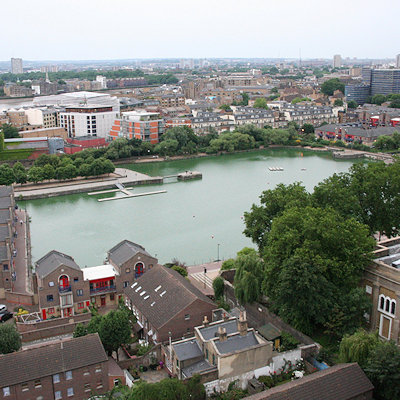
Like us on Facebook
PLACE NAMES


 
|
|
Shadwell
|

|
|
|
In the 13th century, the area was known as Scadflet and Shatfliet - derived from the Anglo-Saxon fleot, meaning a shallow creek or bay - the land was a low lying marsh. A spring, issuing from near the south wall of the churchyard was dedicated to St Chad, and filled a nearby well. The origin of the name is therefore confused, being associated with both the earlier use and the later well. Shadwell was formerly called Chadwelle.
In 1975, archaeologists discovered evidence of a port complex between Ratcliff and Shadwell, that was used throughout Roman occupation of Britain, and being most active in the 3rd century AD. The port seems to have initially been used for seagoing ships into the City of London, which is believed to have stopped between 250 and 270AD. A water level drop meant that the port was used primarily for the public bath house near St George in the East, which existed from the first to fourth centuries. Archaeologists also found evidence of a late third-century signal tower in Shadwell. A Roman cemetery containing two coffins was also discovered in Shadwell in around 1615.
St. Paul's Shadwell with St. James Ratcliffe, is traditionally known as the Church of Sea Captains. In 1656 the church was established as a Chapel of Ease, from St Dunstan's, at Stepney. In 1669, it was rebuilt as the Parish Church of Shadwell, and it was the last of five parish churches rebuilt after the Restoration. In 1820, it was again rebuilt as a 'Waterloo church'. Captain James Cook was an active parishioner and John Wesley preached in the church from time to time. Isham Randolph of Dungeness, one of Thomas Jefferson's grandfathers and son of William Randolph, was married in St. Paul's church.
|
 Feel free to Email me any additions or corrections Feel free to Email me any additions or corrections
LINKS AVAILABLE TO YOUR SITE
| |





